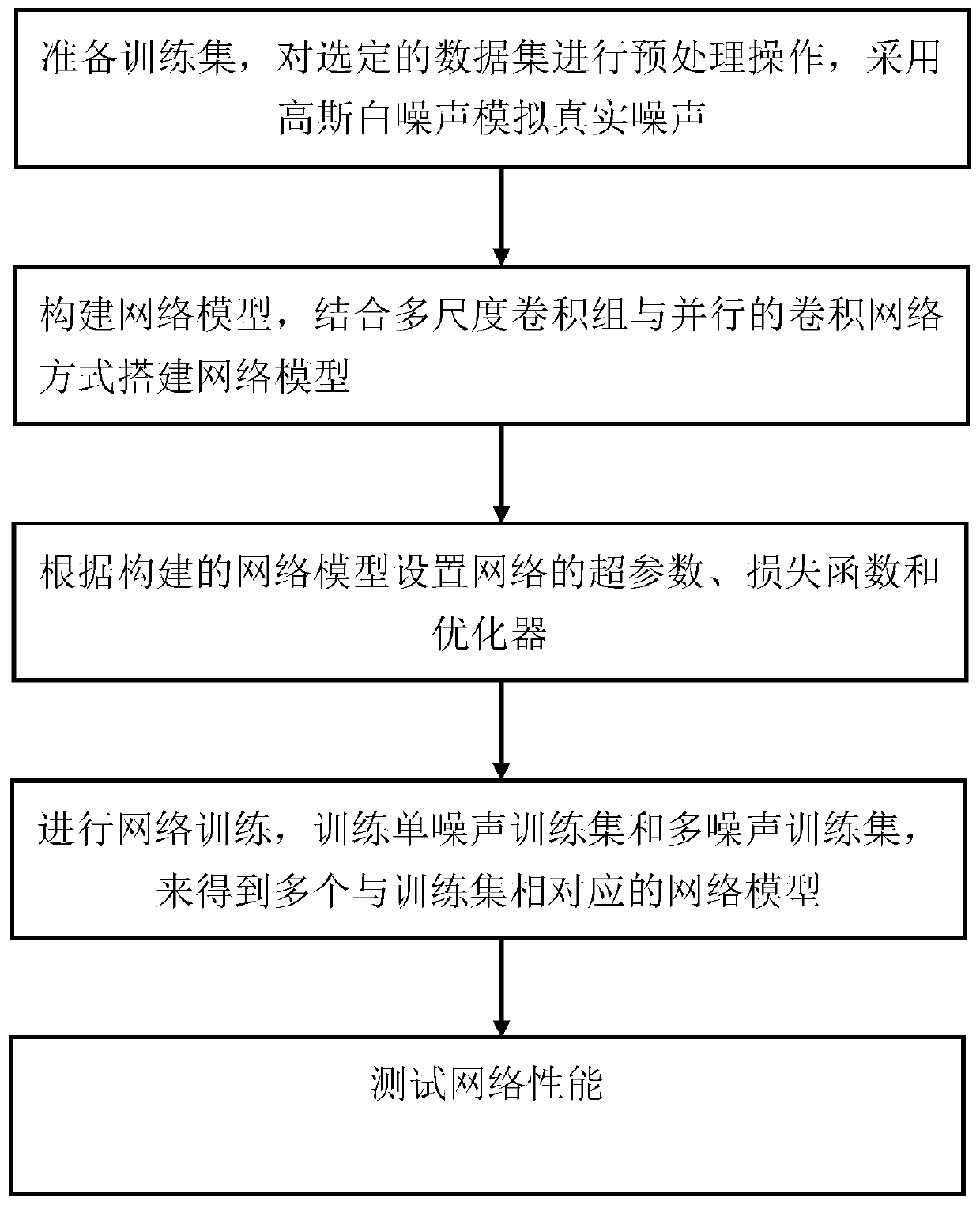Convolutional neural network image denoising method based on multi-scale convolution groups and parallelism
A convolutional neural network, multi-scale technology, applied in neural learning methods, biological neural network models, neural architectures, etc., can solve the problems of time consumption, difficult denoising results, and efficient recovery of the original image, and achieve great practical significance. Effect
- Summary
- Abstract
- Description
- Claims
- Application Information
AI Technical Summary
Problems solved by technology
Method used
Image
Examples
Embodiment
[0064] Based on multi-scale convolution group and parallel convolutional neural network image denoising method, the experimental platform used in the present invention is Tensorflow. Such as figure 1 As shown, the specific steps are as follows:
[0065] Step 1. Prepare the training set, perform preprocessing operations on the selected data set, and use Gaussian white noise to simulate real noise. The training set includes noise images and corresponding original images.
[0066] Step 1.1. Use the BSD500 data set, whose image size is 180*180, and randomly select 60 images from it as the original images in the training set. Add Gaussian white noise with different noise standard deviations to the above original image to form a variety of noise images, where the range of noise standard deviation is σ=[10, 100], and the step size is 10, and 10 groups of noise with different standard deviations can be obtained image. Each noise image corresponds to the corresponding original image...
PUM
 Login to View More
Login to View More Abstract
Description
Claims
Application Information
 Login to View More
Login to View More - R&D
- Intellectual Property
- Life Sciences
- Materials
- Tech Scout
- Unparalleled Data Quality
- Higher Quality Content
- 60% Fewer Hallucinations
Browse by: Latest US Patents, China's latest patents, Technical Efficacy Thesaurus, Application Domain, Technology Topic, Popular Technical Reports.
© 2025 PatSnap. All rights reserved.Legal|Privacy policy|Modern Slavery Act Transparency Statement|Sitemap|About US| Contact US: help@patsnap.com



